Those perennial apparitions
of the backwaters – their shadows
the faded sails of anchored boats
– John Kinsella
The fishing pier off Atsenia Otie Key (next to Cedar Key) is especially popular with cormorants.
Those perennial apparitions
of the backwaters – their shadows
the faded sails of anchored boats
– John Kinsella
The fishing pier off Atsenia Otie Key (next to Cedar Key) is especially popular with cormorants.
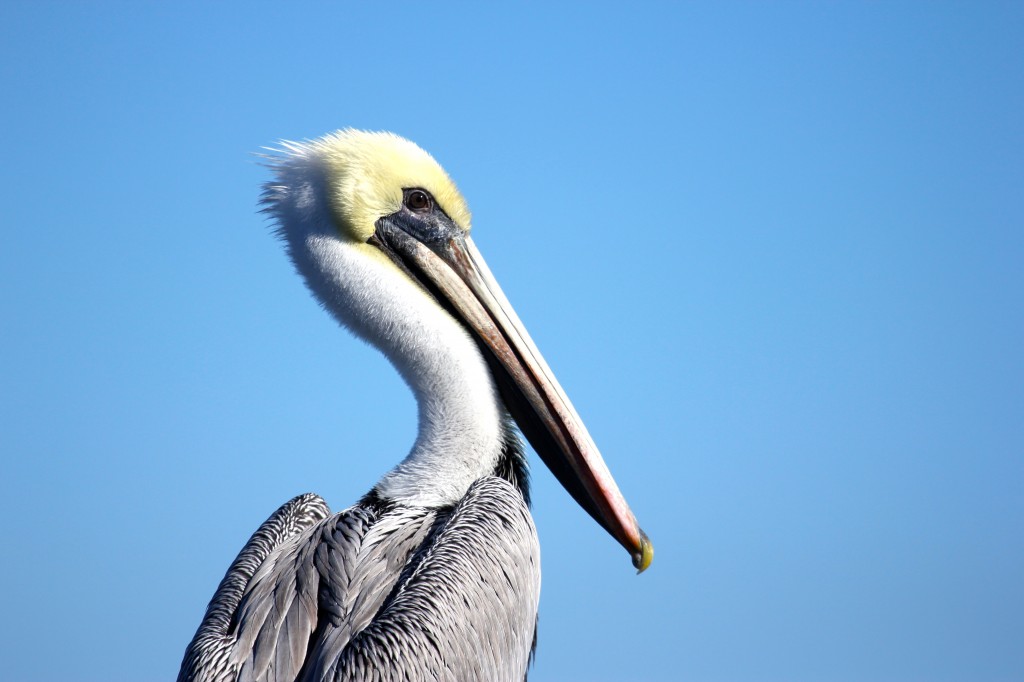
I give myself away as a tourist and a Yankee anytime there’s a pelican about. I can not resist them or their prehistoric goofiness.
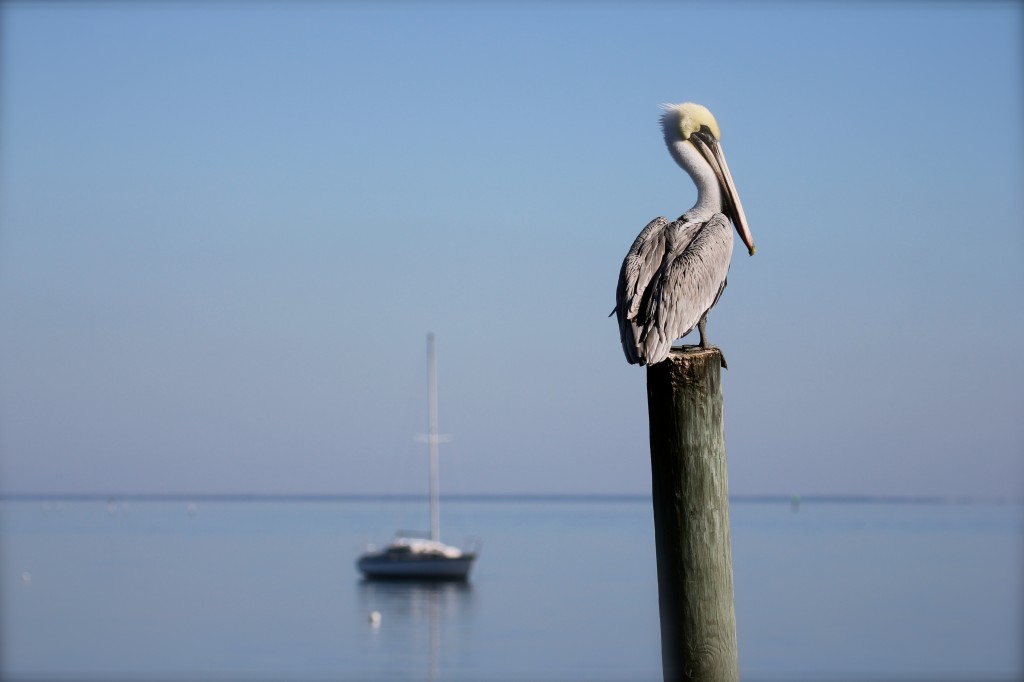
They’re somehow both stately and silly… and seem to know that they improve any view.
Pelican, piling, old tire.
I know they’re beggars, but how can anyone resist?
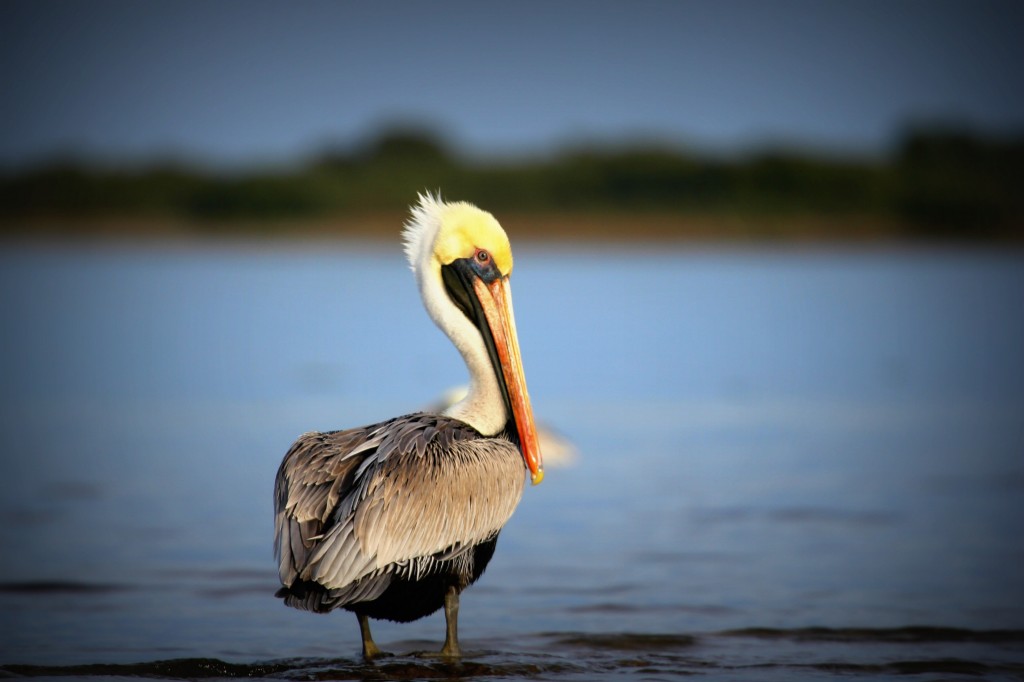 Can’t you just hear him begging… “Please take my photo. You need at least a thousand more. A thousand more photos of me!”
Can’t you just hear him begging… “Please take my photo. You need at least a thousand more. A thousand more photos of me!”
The Brown Pelicans of Cedar Key were very well documented during my time there. I’m thinking of producing a wall calendar.
What bird can’t you resist a photo of?
So, where did we leave off? Wasn’t it some time last year? Is that even possible? Thanksgiving, Christmas, and New Year’s have come and gone again. That just keeps happening, doesn’t it?
I was happily hidden away for most of the holidays on the gulf coast of Florida. We spent a couple days around Thanksgiving in Cedar Key and decided to go back and spend three weeks there during my winter break. Cedar Key isn’t the sort of place you’ve probably ever heard of; in fact, it’s said that Cedar Key isn’t the sort of place you can easily stumble upon, as it’s just so out of the way. But, it’s perfect for someone like me, who enjoys having absolutely nothing to do.
The draw for us there was the birds, of course! We got out most days in the kayak to explore the marshes and to see what we could see. We found American Oystercatchers (even one banded in NJ) but never could locate the big numbers that winter in the area because we were limited by the tides and how far we could paddle safely. There’s so many birds that winter there – I look forward to sharing some pix with you!
I also had the chance to finally meet FC from Pure Florida, who first put Cedar Key on my radar a couple years ago. If you don’t know FC, he’s a science teacher at the sweet little Cedar Key School and keeps a long-standing blog about all things Florida. Thanks so much for the quick tour, FC! Maybe next time I can meet Bear?
I so hope your new year is off to a happy start!
Ever felt an angel’s breath in the gentle breeze?
A teardrop in the falling rain?
Hear a whisper amongst the rustle of leaves?
Or been kissed by a lone snowflake?
Nature is an angel’s favorite hiding place.
~Terri Guillemets
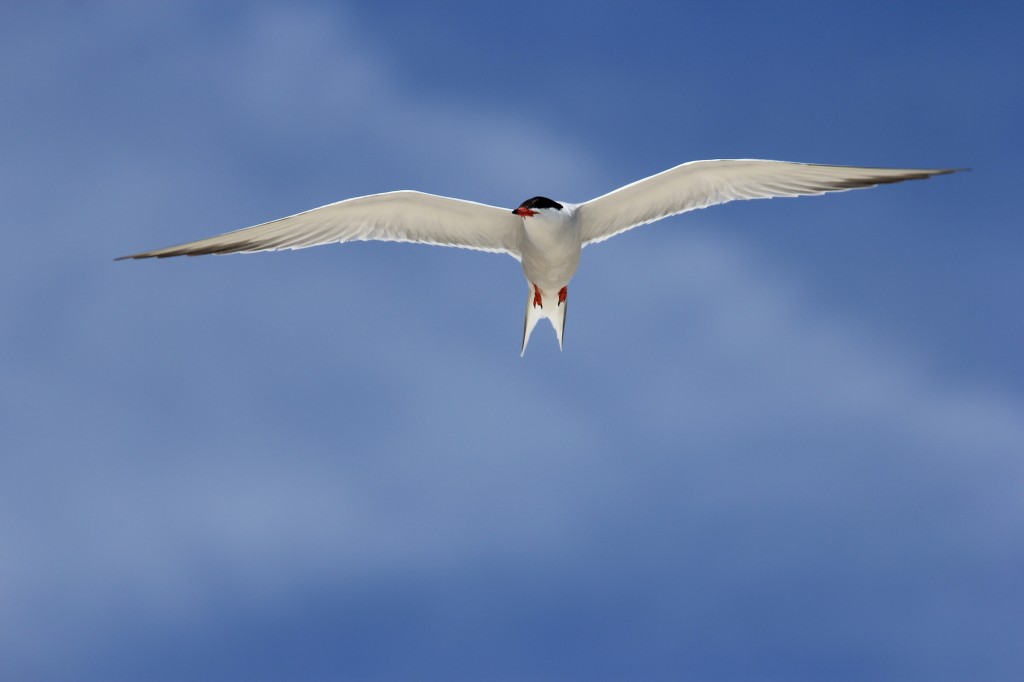
Common Terns didn’t breed at any of my sites this summer, but they visited with the gushing of the tide, shaking themselves and their silvery fish. Angels, I’m sure.
American Oystercatchers were such a heartbreak this summer, I can’t even tell you!
I’ve been struggling with how to write about my beach-nesting bird experience in NJ… I’m not really sure what that’s about, but there’s no question that I enjoyed myself.
Was the season a success? I think so, but there are so many factors that have a hand in the success or failure of these birds and the truth, I think, is that I don’t have enough experience to understand yet how the factors all work together.
We had 8 pairs of AMOYs (American Oystercatchers) who made 14 nest attempts. Nine chicks hatched and 8 fledged. Eight fledges is a good number! Only one pair succeeded on their first nest attempt and one pair didn’t ever succeed, despite three tries. These are just numbers, really, and give no hint of the sweat and tears (mine) or the various struggles involved.
American Oystercatchers are comical birds and shy, as a rule. Each pair had a distinct personality and perspective on life as an Oystercatcher. It was a huge privilege to know these birds as individuals and to watch over them during the season. Unlike Piping Plovers who are so hard to detect on the beach, American Oystercatchers are very visible and were a constant source of entertainment and worry for me.
The 4 pairs that had the easiest (?) breeding success did so on a dredge spoil island. I loved going out there to check on them, despite the nearly impenetrable phragmites that covered much of the island. Aside from the occasional kayaker at low tide, I usually had the place to myself and had to go into full stealth mode to even get a look at the adults or chicks because the birds there were so shy. There were also breeding Killdeer and Yellow Warblers and a couple of Willets that went into such amazing histrionics at the sight of me that it was practically impossible to sneak up on anything…
I remember feeling complete surprise (and then panic!) the first time my boss brought me there and showed me an Oystercatcher nest in its wonderful camouflage along the shoreline of the inlet. In the weeks that followed, I got pretty good at the game of “I Spy” with the Oysercatchers and their eggs, but wisely recorded not only a nearby landmark for each nest, but its GPS coordinates as well, so that I could find it again. All bets were off once the chicks hatched, of course, and the adults did some of their very best hiding and distraction displays once there were chicks running around. Because each of the birds there was banded, I learned to know their individual territories and knew where they were likely to hide their chicks when I came calling to check in on them. I’d set up my scope in likely places looking for chicks and, spotting the adults, would promise, “Just show me your babies and I’ll go away…” thus, I tried to honor their need for privacy by leaving them alone as much as possible. Sad days were those when a nest was inexplicably destroyed or just vanished, or when a healthy chick went missing. Fortunately, I got to watch 5 chicks hatch, fatten up and learn to fly (and hide from me!) there and will never forget the wonder of that or the surprise of coming upon a nest of hatching chicks.
Obviously, pairs that nest on public beaches have many more challenges and most didn’t fare as well as those nesting in seclusion on the dredge spoil island. I came to expect those AMOY nests to fail, sadly. And there’s nothing sadder than a pair of Oystercatchers with a just failed nest. They hang around together in odd corners of the beach, they scrape and mate and posture and call while beach-goers, unaware of their struggles, look on. Some will lay a new nest in an improbable place and do their best to keep it safe, until it, too, fails and the cycle starts all over again. Some just give up and spend the remainder of the summer without purpose, a sad reminder of our failure to be responsible stewards of the habitats these birds need to thrive..
We had just one pair that was successful on a public beach and it took them two tries. Their first nest disappeared just days before it was due to hatch. They moved 50 ft. or so away from their first attempt, laid their eggs right out on the open beach, and hatched and fledged 3 chicks! This despite near constant predation on the Least Tern colony that shared the site, a very active fishing pier and jetty, and a very popular bathing beach just steps away. I was never able to determine what caused their first nest to fail, nor did I figure out what was killing so many Least Terns at the site – I suspected feral cats – but I did trap numerous opossums and, to my great surprise, a red fox. I could easily write a very humorous account of the many ministrations I and my interns went through trying to trap whatever predator was causing such havoc there, but suffice it to say that we were on pins and needles for most of the season. I was away at a baseball game on my day off when I got the text message that the nest had hatched. “I’m so happy for them!” my intern said. It was a huge relief, but really only the beginning of our worries!
The chicks grew up without incident; there were a few days of worry when one of the adults was hooked by a fisherman casting on the jetty, but he did the right thing and untangled the bird and removed his hook from its wing – which was scarily droopy for a few days – and it recovered. The chicks’ official fledge date was only a day or two before I left NJ to come home, but the last I heard all was well there on the beach.
Nice numbers of AMOYs winter in NJ, but many fly south (immature birds may not return to the beach or marsh where they hatched for a couple years) as far as the gulf coast of Florida. I’m hoping to see a couple NJ-banded AMOYs when I visit there during Thanksgiving break – anything to extend my season with Oystercatchers!
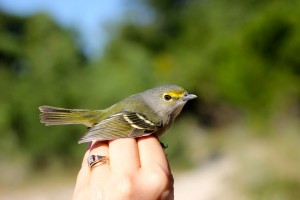 Most Octobers find us on Jekyll Island for a week or so, to enjoy the gorgeous weather and the beach at its finest season. The days – and the ocean – are warm enough for swimming and the nights are just cool enough to make you enjoy the breeze.
Most Octobers find us on Jekyll Island for a week or so, to enjoy the gorgeous weather and the beach at its finest season. The days – and the ocean – are warm enough for swimming and the nights are just cool enough to make you enjoy the breeze.
We always make it a point to visit JIBS – the Jekyll Island Banding Station – for a couple hours during our stay. I enjoy the chance to see birds up close and I also like hanging out with the folks who run the station. Often, it’s the only time I see these friends all year. It feels good to hang out with others who are as nerdy about birds in their own way! Our timing was off somewhat this year, in that most of the days were “slow”, but still the common birds are especially beautiful when you can appreciate the fine details of their feathers (like those of the white-eyed vireo pictured here) up close. I come away from any visit having learned something new.
It might be easy to wonder about the benefits of bird-banding, at least until you find a banded bird in the field yourself. Information on migration, mortality rates and range are some of the things that researchers learn from banding.
Another must-visit-place is Gould’s Inlet on St. Simmons Island; I go there to enjoy the birds at low-tide. I’m always hoping to see a couple Piping Plover. Each year, I look for PIPLs that are banded, as the inlet is a popular place for wintering birds. I’ve found 3 banded birds there, and at least a dozen others in t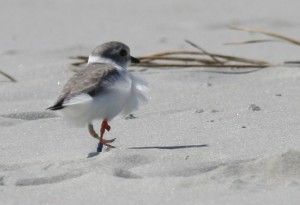 he couple years I’ve visited during the month of October. I report the band combinations and in return find out a little info about the bird. Two of the three banded birds are from the Great Lakes and this year we saw a bird from the Great Plains population. Especially interesting is the PIPL in the photo – I first saw this bird (hatched on the UP of Michigan in 2007) in 2012 and we saw it again this year! It’s 7 years old and apparently spends every winter at Gould’s Inlet. This bird, too, feels like an old friend almost, one that I can only recognize because of the colored bands on its legs. Pretty cool, huh?
he couple years I’ve visited during the month of October. I report the band combinations and in return find out a little info about the bird. Two of the three banded birds are from the Great Lakes and this year we saw a bird from the Great Plains population. Especially interesting is the PIPL in the photo – I first saw this bird (hatched on the UP of Michigan in 2007) in 2012 and we saw it again this year! It’s 7 years old and apparently spends every winter at Gould’s Inlet. This bird, too, feels like an old friend almost, one that I can only recognize because of the colored bands on its legs. Pretty cool, huh?
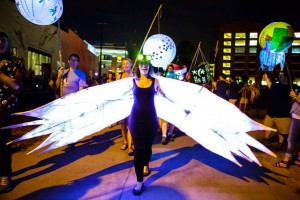 |
| I was the-lady-behind-the-snowy-owl in a thousand photos taken that night! |
Given the opportunity, I’ll complain to most anyone who’ll listen about how much I hate living in the city, but I have to admit (however grudgingly!) that it does have its perks, one of which is the Lantern Parade. It’s such a fun event and is unique to ATL…
It feels like everyone in the city comes out and it’s a crazy riot of colorful people (and their mostly homemade lanterns) and music. A group of us from the Atlanta Audubon Society walked the two mile route together with our lanterns decorated with birds – mine had monarch butterflies – along with an estimated 15K others. It’s a wonderful event for the community; participants come up with a crazy, creative variety of ways to add color and light to the parade and people line the pathway and rooftops to watch. It’s held each year to celebrate the opening of Art on the Beltline, an exhibition that I hope to post about later in the week.
I found the video below to give you a peak at the view from above… I especially like the dusk shots at the beginning with the skyline in the background and at the end from the after parade party in Piedmont Park!
Atlanta Beltline Lantern Parade 2014 – Filmed By American Drone Industries from E.T. Phoned Home on Vimeo.
There is something deep within us that sobs at endings. Why, God, does everything have to end? Why does all nature grow old? Why do spring and summer have to go?
~ Joe Wheeler
My summer of sun and fun at the Jersey Shore has come to an end and I’m back in ATL to wait out the off season…
We packed up the cars, the dog, the bunny and at least 5 gallons of beach sand in every nook and cranny of my belongings and took the long way home along the Blue Ridge Parkway. I’ve seen these mountains in Spring, but in late Summer they show their true glory framed by blooming Joe Pye and Black-Eyed Susan. It was already feeling like Fall last week at 6,000 feet above sea level, even if there were still a couple Least Tern chicks waiting for the sky back on my NJ beaches.
I’d thought I’d be despondent at leaving the beach and its birds, but it was time; the work I was there to do was done. My last week on the beach had been filled with gray days and a cool northeast wind. I felt the season beginning to shift gears, felt the summer fading into the wind. The birds, for the most part, had already moved on.
The idea that I’d have time to blog about any of the work that I was doing was ridiculous! I hope to revisit some of the highlights (and the failures) here in the weeks to come, and to process all that I saw and learned. I miss the beach already, of course; I miss staring out at the sea for hours, miss the little dramas that played themselves out among the beach-nesting birds that I was privileged to know, miss being a part of something important.
Anyway so… stay tuned! And in the meantime, tell me about what you’ve been up to…